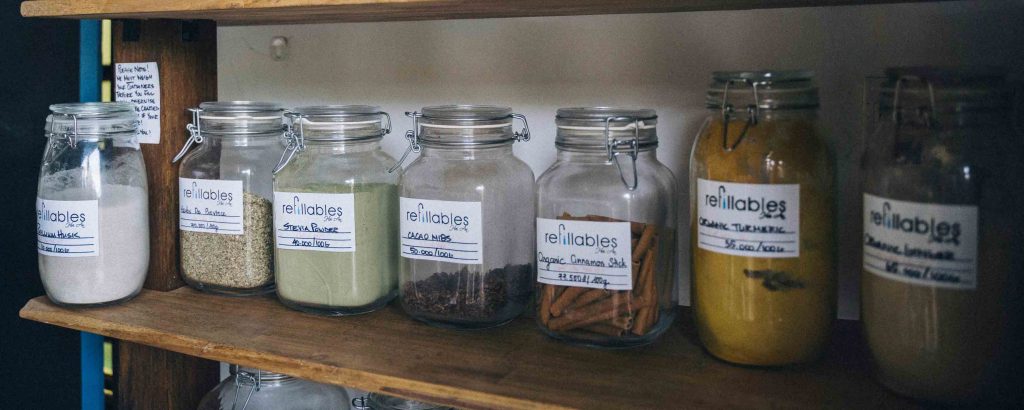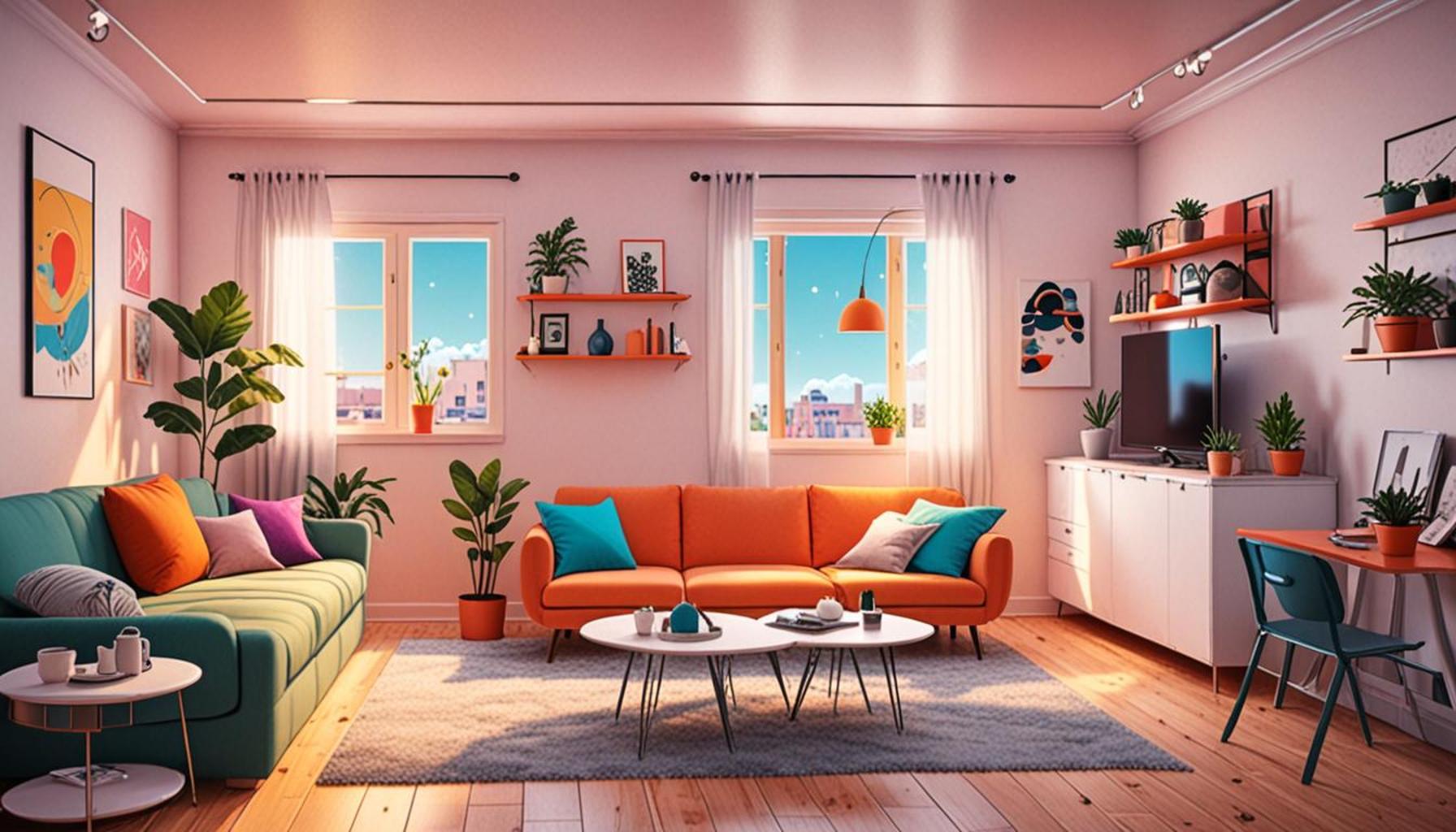Minimalism and Sustainability: Storage Solutions that Reduce Waste

The Shift Towards Mindful Living
As people become increasingly aware of the detrimental effects of consumerism on the environment, many individuals are embracing a more intentional way of living. This transition towards minimalism and sustainability represents a concerted effort to close the gap between one’s lifestyle choices and their ecological footprint. Not only does this shift aim to create a simpler home life, but it also fosters a deeper appreciation for our planet’s resources and the importance of their preservation.
Central to this movement is the idea of effective storage solutions. Adopting smart, sustainable storage options can dramatically enhance the quality of your living environment and promote a sense of well-being. For example, by implementing a systematic approach to reducing clutter, you can transform overwhelmingly busy spaces into serene environments that invite tranquility and mental clarity. Research shows that clear, organized spaces can significantly improve focus and reduce stress, making this a crucial step in the journey toward minimalism.
Moreover, choosing products designed to minimize waste is essential in the pursuit of sustainability. By investing in durable and reusable materials, such as glass containers or compostable bags, individuals can play a vital role in lessening the amount of single-use plastics that contribute to landfill overflow. This intentionality not only benefits the planet but also encourages a personal ethos that prioritizes resourcefulness over mindless consumption.
- Clarity of Space: Research suggests that decluttering can lead to a clearer mind and improved emotional health, enhancing overall life satisfaction.
- Financial Savings: When you focus on multi-functional items, such as a sofa bed or nesting tables, you not only save space but also money that can be applied to experiences rather than possessions.
Exploring innovative storage solutions that align with minimalism and sustainability opens the door to exciting possibilities. When considering storage options, it is beneficial to look for features such as:
- Eco-friendly Materials: Utilizing bamboo, recycled plastics, and reclaimed wood showcases an awareness of the need to limit the depletion of natural resources.
- Space-saving Designs: Opting for modular and collapsible items such as stackable baskets allows for efficient use of both space and resources.
- Local Sources: Supporting local artisans not only encourages community growth but also significantly reduces transportation emissions, aligning with sustainable practices.
By consciously integrating these principles into your life, you not only simplify your living environment but also contribute positively to a healthier planet. Ultimately, the interconnection of minimalism and sustainability can lead to a more enriching and purposeful lifestyle. As awareness around these concepts grows, many are inspired to take further steps toward sustainable living, exploring ways to reduce their carbon footprint and enhance their quality of life.

DISCOVER MORE: Click here to explore the power of simplicity
Embracing Sustainable Storage Solutions
To fully embrace minimalism and sustainability, it’s essential to explore various storage solutions that are not only efficient but also environmentally friendly. This approach allows individuals to declutter their lives while simultaneously making conscientious choices that lessen their environmental impact. A crucial aspect of this transition lies in selecting storage methods that prioritize durability and resourcefulness.
One effective way to initiate a shift towards sustainable storage is by analyzing common materials used in storage solutions. Traditional storage products often rely on single-use plastics or non-recyclable components that contribute to environmental degradation. Instead, consumers should look for options made from recycled materials or biodegradable resources. For instance, sustainable storage bins made from recycled plastics provide a robust alternative that addresses waste reduction while fulfilling organizational needs.
Utilizing repurposed items can also play a significant role in sustainable storage. By thinking creatively, individuals can transform everyday objects into functional storage solutions. For example, mason jars can be used to organize small kitchen items, while wooden crates can serve as stylish shelving units. Not only does this strategy reduce waste, but it also adds a personal touch to home decor, demonstrating that sustainable living doesn’t have to compromise style.
Multi-Functional Storage Systems
Investing in multi-functional storage systems is another impactful way to reduce waste and promote a minimalist lifestyle. These systems serve dual purposes, allowing for efficient use of space and resources. Here are a few examples:
- Sofa Beds: Perfect for small apartments, sofa beds provide seating during the day and a sleeping area at night, eliminating the need for an additional bed.
- Nesting Tables: These tables can be stored compactly together when not in use, offering flexibility without sacrificing space.
- Storage Ottomans: These versatile pieces act as seating, footrests, and hidden storage, encouraging a clutter-free environment.
While purchasing new items can be a part of the transition, it is equally important to consider upcycling and thrift finds. Thrifting not only saves money but also keeps functional items out of landfills. This practice allows individuals to cultivate a unique collection of storage solutions that tell their story while supporting sustainable practices. Vintage suitcases, for instance, can serve as chic storage for blankets or off-season clothing, all while reducing waste.
Ultimately, the journey toward a minimalist and sustainable lifestyle begins with informed choices regarding storage solutions. By prioritizing the use of eco-friendly materials, repurposing existing items, and investing in multi-functional systems, individuals can contribute to a more sustainable future. This shift not only enhances personal well-being but also plays a part in a larger movement towards environmental stewardship.
| Category 1 | Category 2 |
|---|---|
| Eco-Friendly Materials | Utilization of sustainable resources like bamboo and recycled plastics |
| Space Efficiency | Innovative designs that prioritize compact solutions, reducing footprint |
| Waste Reduction | Promoting practices that minimize unnecessary purchases and disposals |
| Adaptable Functionality | Versatile storage solutions that serve multiple purposes, encouraging reuse |
| Local Production | Support for local artisans and businesses, reducing transportation emissions |
Incorporating *minimalism* and *sustainability* in storage solutions not only helps in reducing waste but also fosters a lifestyle that is conscientious about consumption. By focusing on eco-friendly materials, you embrace products made from renewable resources, encouraging sustainable practices in manufacturing. The appeal of *space efficiency* in designs reflects a need to live within our means, while also contributing to lesser reliance on expansive, resource-consuming products.Furthermore, such storage solutions reshape our habits by promoting *waste reduction*, urging consumers to revisit their purchasing choices and minimize the clutter in their lives. With *adaptable functionality*, systems can serve multiple purposes, thereby extending their life cycle and encouraging a culture of reusing rather than discarding. Supporting local production also ties communities closer together, resulting in economic benefits that echo through shared values of sustainability. Each of these elements interlinks, creating not just a product but a holistic approach to living sustainably.
DIVE DEEPER: Click here to learn more
Innovative Storage Techniques for Sustainable Living
As the movement towards minimalism and sustainability continues to gain momentum, exploring innovative storage techniques becomes essential. These methods not only encourage a tidier living space but also foster a greater awareness of our consumption patterns, prompting us to ask essential questions about what we truly need.
One such technique is the use of vertical storage solutions. Maximizing vertical space can significantly reduce clutter, especially in smaller homes or apartments. This approach includes options like wall-mounted shelves and pegboards, which allow for the effective use of often-overlooked walls. By engaging vertical space, individuals can create an organized and minimalist environment without adding excessive furniture, thus reducing the demand for new materials.
Another sustainable method involves implementing a minimalist approach to seasonal storage. Many individuals own items that are only used occasionally, such as holiday decorations or seasonal clothing. Instead of purchasing new storage containers, consider using durable, reusable bags or even old cardboard boxes that can be found at home. Labeling these items with biodegradable labels can further enhance organization without the need for new plastic products. Embracing this technique not only aids in reducing waste but also encourages conscious consumption and ownership of fewer, more meaningful belongings.
Smart Storage Technology
In a world where technology plays a pivotal role in our daily lives, it can also contribute to sustainability in storage solutions. With the rise of smart storage technology, homeowners can now manage their possessions more efficiently. For instance, smart home applications help track items and remind individuals when to recycle or donate unneeded goods. This technological advancement encourages a minimalistic mindset by simplifying inventory management and reducing forgetfulness, ultimately leading to less waste.
Furthermore, the popularity of mobile storage solutions has surged in recent years. Portable storage units that can easily be moved around offer flexibility for those adhering to a minimalist lifestyle. Companies providing such services often focus on environmentally friendly practices, utilizing recycled materials for their containers. This portable advantage allows homeowners to assess their storage needs regularly and make conscious decisions about what to keep and what to donate, empowering individuals to maintain their commitment to sustainability.
Finally, it is essential to consider the impact of adopting a community-oriented approach to storage. Sharing resources within a community can prove beneficial, as items such as tools or kitchenware can be utilized collaboratively instead of individually owning everything. This practice not only conserves resources but nurtures a sense of connection and responsibility within the community. Organizing community swaps or tool libraries encourages resourcefulness while promoting a sustainable lifestyle by extending the lifecycle of goods and minimizing unnecessary consumption.
As individuals continue to explore new ways of achieving minimalism through sustainable storage solutions, it becomes clear that small changes can have a significant impact. Whether it’s reorganizing vertical space, utilizing smart technology, or fostering community relationships, the journey towards a minimalistic yet sustainable lifestyle is filled with possibilities that invite creativity and conscientiousness.
DISCOVER MORE: Click here to find out how to create a harmonious family environment</
Conclusion
Exploring the intersection of minimalism and sustainability reveals a powerful synergy where thoughtful storage solutions can lead to significant waste reduction. As we strive for a more conscious lifestyle, embracing innovative techniques such as vertical storage and smart technology empowers us to re-evaluate our possessions and their impact on the environment. Emphasizing reuse and community sharing not only cultivates a sense of connection with others but also challenges us to be more resourceful in our consumption habits.
The practices discussed illustrate that the journey towards a minimalist and sustainable home is not solely about decluttering physical space, but transforming our mindset towards ownership and value. By prioritizing functionality and sustainability in storage solutions, we engage in a broader commitment to reducing waste and fostering a healthier planet. As we move forward, remember that each small decision contributes to larger environmental goals. Whether it’s opting for reusable storage options or participating in local resource exchanges, every action counts.
With the growing awareness around environmental issues, it is imperative to consider how our choices influence not just our living spaces, but the world at large. Thus, the challenge lies before us: to integrate sustainable practices in our daily lives, allowing minimalism to serve as a framework for mindful living. As you continue to explore storage options, let this movement inspire you to simplify, reduce waste, and build a future where sustainability is woven into the very fabric of your lifestyle.


